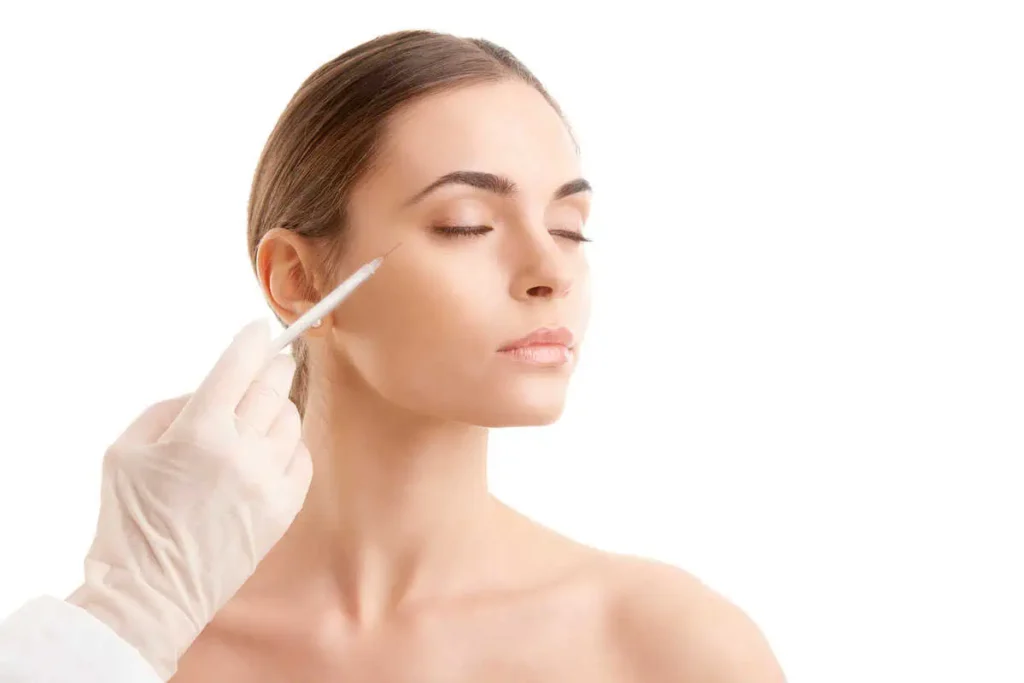

Botox treatments are widely used for reducing wrinkles. They involve a purified version of Botulinum toxin, specifically targeting facial lines to create a smoother appearance. These treatments have gained popularity among those seeking a more youthful look. However, the safety of Botox is a concern for many. Before considering this option, knowing the advantages and stakes involved can help you decide if this option is suitable for your needs.
Botox, a commercial name for Botulinum toxin, is a purified substance derived from a microorganism called Clostridium botulinum. This toxin, in its natural state, can cause medical concerns. However, when isolated, purified, and used in tiny, controlled doses, it serves medical and cosmetic purposes effectively and safely.
Backed by regulatory bodies such as the FDA, Botox is not just a cosmetic fix but also a medical aid, treating a range of conditions from excessive sweating to chronic migraines. In the cosmetic industry, Botox benefits are primarily recognized for its capacity to lessen the appearance of facial wrinkles, offering a minimally invasive solution to those seeking a more youthful appearance. Although widely associated with aesthetic enhancements, its applications span a broad spectrum, reflecting the versatile nature of this neurotoxin in various medical treatments.
Botox works for wrinkle reduction by targeting the underlying causes of these lines, mainly muscle contractions. When you smile, frown, or squint, the muscles under your skin contract, causing your skin to fold and form wrinkles. Over time, these wrinkles can become permanent. Botox reduces the appearance of these lines by paralyzing the muscles responsible for their formation.
When injected, Botox blocks the signals from the nerves to the muscles. The injected muscle can no longer contract as forcefully, which causes the wrinkles to relax and soften. This effect is most noticeable in dynamic wrinkles, or those caused by muscle movement, such as frown lines between the eyebrows, crow’s feet around the eyes, and forehead lines.
The treatment doesn’t involve a significant recovery time and leaves no scars, making it a convenient option for wrinkle reduction. The total effect of Botox typically shows within a week after the treatment. It can last for several months, after which the muscle action gradually returns, and the lines and wrinkles begin to reappear.
The safety profile of Botox is generally considered favorable, especially when administered by a skilled and licensed healthcare provider. Botox injections are usually safe under professional care, but like any medical procedure, they do have potential side effects. Common side effects include pain, swelling, or bruising at the injection site, headache, flu-like symptoms, droopy eyelids, and occasionally, more severe issues like muscle weakness, vision problems, or trouble breathing. These more serious side effects are rare, particularly when Botox is used for cosmetic purposes like wrinkle reduction.
In the context of cosmetic procedures, Botox is one of the most commonly performed treatments. Studies have shown that complications in Botox procedures occur in less than 1 in 2,000 cases, which is relatively low compared to other cosmetic procedures. Most reported adverse effects are transient and self-limited, often resolving independently without long-term consequences. Most serious complications reported with Botox were associated with its use in treating muscle spasms or other medical conditions, not its cosmetic applications.
The key to minimizing risks is ensuring a qualified and experienced healthcare provider performs Botox injections. In many cases, complications arise due to improper administration or dosing. Additionally, patients should be candid with their healthcare provider about their medical history and any medications they are taking, as certain conditions and medications can increase the risk of side effects.
The experience of undergoing a Botox cosmetic procedure typically involves the following steps:
The ideal candidates are adults over 18 who are in good physical health. They mustn’t be pregnant or nursing, as the effects of Botox on pregnancy and breastfeeding are not well established.
The procedure is particularly effective for individuals looking to address dynamic wrinkles, which are formed due to muscle contractions from facial expressions like smiling, frowning, or squinting. These include areas like the neck, forehead, or around the eyes. People aiming for preventative and reparative treatments can benefit from Botox. This means it works for those in their 20s and 30s who want to prevent wrinkles and older individuals looking to reduce the appearance of already existing wrinkles.
However, specific individuals are advised against Botox treatments. This includes people who have allergies to any of the ingredients in Botox, those with severe infections or illnesses, including specific neuromuscular conditions, and individuals taking certain medications that might interfere with the effects of Botox. Additionally, those with thick facial skin, deep facial scars, existing muscle weakness in the target areas, or significant facial asymmetry might not be suitable candidates.
Discover the transformative power of aesthetic services with The Science of Beauty medical spa. Dive into a world where cutting-edge research meets the art of personal enhancement. Whether exploring the latest skincare innovations, seeking advanced cosmetic treatments, or simply curious about the best practices for your beauty regimen, The Science of Beauty’s team offers an insightful journey.
Unlock the secrets of maintaining youthful skin, understand the intricacies of various cosmetic procedures, and learn how to blend science and art for your beauty needs. Contact and join us in unraveling the mysteries of beauty through a scientific lens.